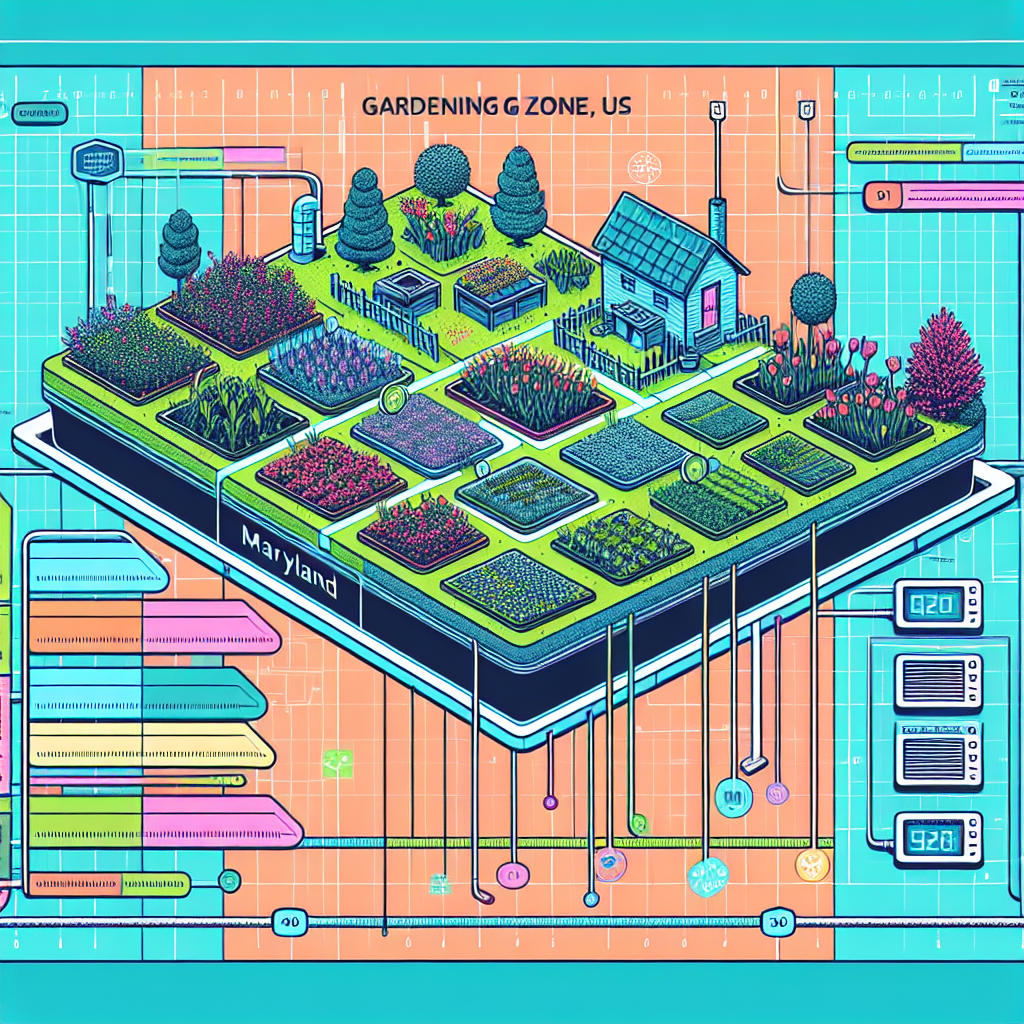Optimizing Gardening in Maryland: A Comprehensive Guide to Gardening Zones
September 23, 2024 at 6:51:54 AM
This article provides an in-depth exploration of gardening zones in Maryland, focusing on the USDA Plant Hardiness Zones and factors influencing gardening practices. It includes a case study, tips for plant selection, and best practices for gardening in Maryland, culminating in a call to action for readers to engage with the gardening community.
Introduction to Gardening Zones in Maryland
Gardening in Maryland presents a unique set of challenges and opportunities, largely influenced by its diverse microclimates and geographical variations across the state. Understanding the concept of gardening zones is essential for successful cultivation and plant growth in this region. By identifying the most suitable plants for specific zones, gardeners in Maryland can optimize their gardening efforts and enhance the overall beauty and productivity of their landscapes.
Understanding the USDA Plant Hardiness Zones
The United States Department of Agriculture (USDA) Plant Hardiness Zone Map is a valuable tool for gardeners, providing guidance on which plants are most likely to thrive in specific geographic regions based on average minimum winter temperatures. In Maryland, the USDA Plant Hardiness Zones range from 5b in the western mountains to 8a in the coastal areas, reflecting the state's climatic diversity. According to horticulture expert, Michael Dirr, "Understanding plant hardiness zones is crucial for selecting plants that are adapted to the local climate and environmental conditions. This knowledge helps gardeners make informed decisions and increase the likelihood of gardening success."
Factors Affecting Gardening Zones in Maryland
Several factors influence gardening zones in Maryland, including temperature variations, precipitation levels, elevation differences, and proximity to water bodies such as the Chesapeake Bay. The state's unique topography and weather patterns contribute to microclimates that can significantly affect plant growth and survival. Dr. Sharon Yelanich, a botanist specializing in Maryland flora, explains, "The interaction of cold air drainage, urban heat islands, and coastal influences creates distinct gardening zones within Maryland, requiring careful consideration of plant selection and site conditions."
Case Study: Successful Gardening in Different Zones of Maryland
To illustrate the practical implications of gardening zones in Maryland, let's consider a case study of a garden located in central Maryland that spans USDA Hardiness Zones 6b and 7a. The garden features a diverse range of plants, including native species and exotic varieties, carefully selected to thrive in the respective zones. By leveraging cold-hardy plants in Zone 6b and heat-tolerant species in Zone 7a, the garden maintains year-round visual appeal and ecological balance. Horticulturist Sarah Green notes, "Strategic plant placement based on gardening zones allows for sustainable and vibrant landscapes that require minimal intervention and maintenance."
Selecting Plants for Different Zones in Maryland
When choosing plants for different gardening zones in Maryland, it is crucial to consider not only the USDA Hardiness Zones but also factors like soil type, sunlight exposure, and moisture levels. Botanist Dr. James Wong advises, "Native plant species are often well-adapted to local gardening zones and offer ecological benefits such as supporting pollinators and wildlife. Invasive species should be avoided to preserve the biodiversity of Maryland's ecosystems."
Best Practices for Gardening in Maryland
Successful gardening in Maryland requires adherence to best practices tailored to the specific characteristics of each gardening zone. Soil preparation, watering techniques, and pest management strategies should be customized to meet the needs of plants in their respective zones. For example, sandy soils prevalent in Zone 7a may require more frequent irrigation than clayey soils in Zone 6b. Integrated pest management approaches can help mitigate pest pressures while minimizing environmental impacts. Horticulturalist Karen Lee emphasizes, "By understanding the nuances of each gardening zone and implementing appropriate practices, gardeners can achieve sustainable and thriving gardens in Maryland."
Conclusion: Harnessing the Potential of Maryland's Gardening Zones
In conclusion, gardening zones play a vital role in shaping the success of gardening endeavors in Maryland. By recognizing the diversity of climatic conditions and plant adaptability within different zones, gardeners can maximize the potential of their landscapes and create resilient ecosystems. Effective plant selection, informed by USDA Plant Hardiness Zones and local factors, is key to sustainable gardening practices in Maryland. As horticulturist Bethany Clark articulates, "Embracing the nuances of Maryland's gardening zones enriches the gardening experience and fosters a deeper connection with the natural environment."
Call to Action: Explore Further and Share Your Experiences
I encourage readers to explore the gardening zones in Maryland further, conduct research on plant suitability for different zones, and engage with local gardening communities to exchange knowledge and experiences. By sharing insights and collaborating with fellow gardeners, we can collectively enhance the beauty and biodiversity of Maryland's landscapes and promote sustainable horticultural practices.
Topics




